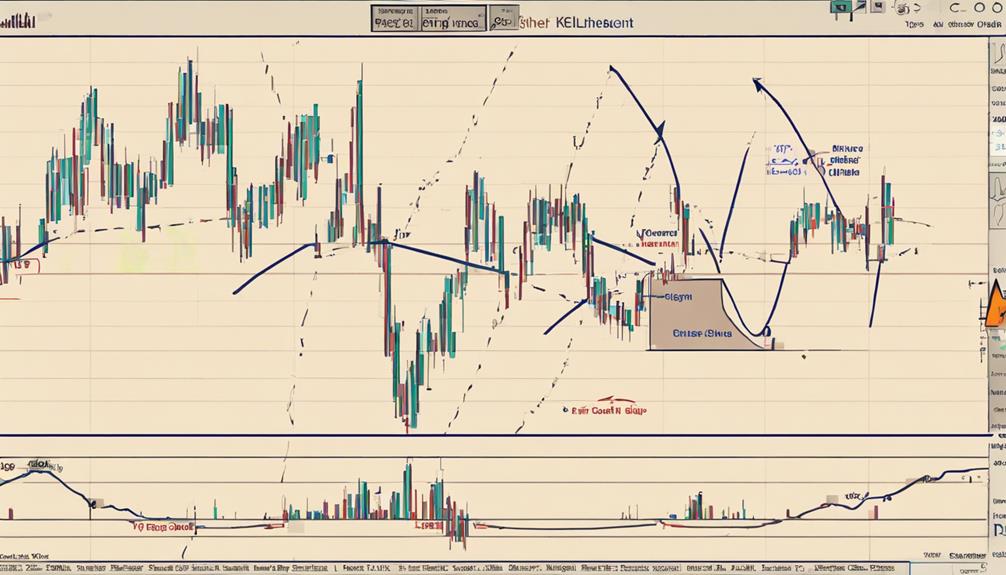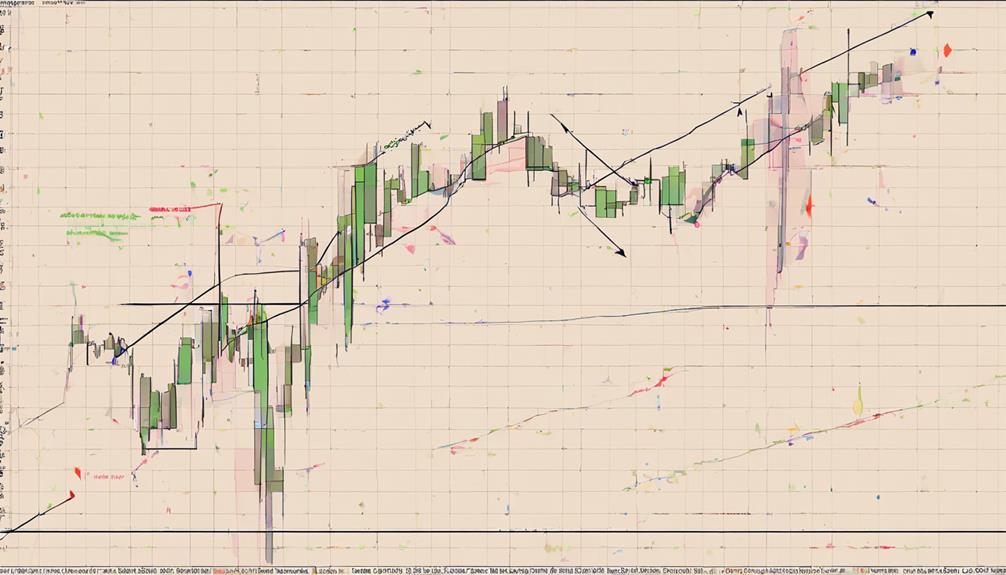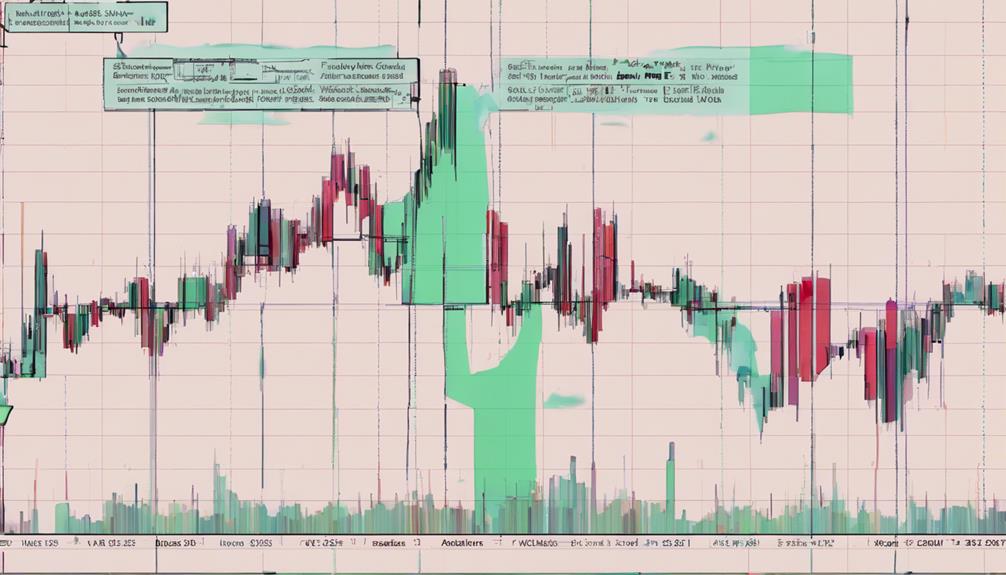Keltner Channels serve as a vital tool in the realm of technical analysis, offering traders a unique perspective on market dynamics and potential price movements. These channels, rooted in the concept of average true range, provide a structured framework for evaluating market volatility and identifying key trend shifts.
By blending moving averages with ATR, Keltner Channels equip traders with valuable insights into market conditions, aiding in strategic decision-making and risk management. As we explore further, the nuances of interpreting Keltner Channel signals and navigating their limitations will shed light on their multifaceted role in shaping trading strategies and optimizing performance.
Understanding Keltner Channel Components
Exploring the components of Keltner Channels reveals a structured framework comprising a middle line, typically an Exponential Moving Average (EMA), and upper and lower bands calculated based on the Average True Range (ATR).
The EMA acts as the middle line, offering a trend indication within the Keltner Channels. The upper band is derived by adding the ATR multiplied by a specified factor to the EMA, while the lower band is established by subtracting the ATR multiplied by the same factor. These bands serve as dynamic levels of support and resistance, adjusting to market volatility.
Wider channels suggest higher volatility, while narrower channels indicate lower volatility periods. Understanding these components allows traders to gauge potential price movements, trend strength, and possible reversal points.
Interpreting Keltner Channel Signals

Having established a solid foundation of understanding the components of Keltner Channels, the focus now shifts towards interpreting the signals generated by these technical indicators. Keltner Channels offer valuable insights into market conditions and potential price movements. Here are key points to consider when interpreting Keltner Channel signals:
- Keltner Channels signal overbought conditions when prices touch the upper band.
- They indicate oversold conditions when prices touch the lower band.
- Breakouts occur when prices move above the upper channel line.
These signals can help traders identify potential trend changes, understand increasing or decreasing volatility levels, and pinpoint entry or exit points for trades.
Reversals observed when prices break out of the channel can provide significant indications of shifts in market sentiment. Additionally, widening channels suggest increasing volatility, while narrowing channels may indicate a period of decreased volatility. By carefully analyzing these signals, traders can make informed decisions to capitalize on market movements effectively.
Advantages of Keltner Channels

Keltner Channels offer traders a strategic advantage by providing dynamic support and resistance levels based on market volatility. These dynamic levels help traders identify trend direction and potential changes in the market, enabling them to adjust their trading strategies accordingly.
One of the key advantages of Keltner Channels is their simplicity, making them accessible for traders of all levels of experience. By using these channels, traders can effectively assess market conditions and make informed decisions based on a comprehensive view of the market environment.
This tool allows traders to gauge market volatility accurately, helping them adapt their strategies to current market conditions. Overall, the ability of Keltner Channels to offer clear support and resistance levels based on volatility equips traders with valuable insights to navigate the markets successfully.
Limitations in Keltner Channel Analysis

An examination of the limitations within Keltner Channel analysis reveals potential challenges faced by traders utilizing this technical tool.
- Keltner Channels exhibit a lagging nature, making them prone to generating false signals in high volatility or sideways markets.
- Subjective parameter settings in Keltner Channels necessitate trial and error for optimal performance, adding a layer of complexity to their usage.
- Reliance solely on historical data in Keltner Channels may not always accurately predict future price movements, highlighting the importance of validation from other indicators.
Given these limitations, caution is advised when using Keltner Channels for trading decisions. Traders should be mindful of the potential for false signals in turbulent market conditions and the necessity of corroborating signals with other technical tools for a more comprehensive analysis. By acknowledging these limitations and employing a well-rounded approach to technical analysis, traders can mitigate risks associated with relying solely on Keltner Channels.
Practical Tips for Using Keltner Channels

When incorporating Keltner Channels into technical analysis, it is advisable to complement them with momentum indicators and trend indicators for enhanced confirmation and insights.
The Keltner Channels consist of an upper and lower channel based on an exponential moving average (EMA) and an Average True Range (ATR) multiplier of the EMA. Traders often use the Keltner Channel bands to assess the volatility and potential price breakouts.
To optimize the use of Keltner Channels, traders can incorporate momentum indicators like the Relative Strength Index (RSI) or Moving Average Convergence Divergence (MACD) to confirm potential entry or exit points.
Additionally, trend indicators such as the Average Directional Index (ADX) or moving averages can be used alongside Keltner Channels to provide further insights into the strength of a trend.
How Do Keltner Channels Impact Analysis in Technical Analysis?
Keltner channels in analysis are used in technical analysis to identify potential price breakouts and trend reversals. By plotting a channel around an asset’s price, traders can gauge the strength of a trend and potential entry or exit points. Keltner channels can provide valuable insights into market volatility and momentum.
Frequently Asked Questions
What Is the Purpose of the Keltner Channel?
The Keltner Channel serves as a technical indicator in financial analysis, designed to track price volatility by utilizing the average true range. It aids traders in identifying trends, breakouts, and potential reversals in the market.
Is Keltner Channel a Leading Indicator?
Keltner Channels are not leading indicators. They are lagging tools relying on historical pricing data. Traders often use them to confirm trends rather than predict future movements. Combining them with leading indicators enhances analytical insights for informed decisions.
What Is Technical Analysis Keltner Channel?
The Keltner Channel is a technical analysis tool utilizing an EMA-based center line with upper and lower channel lines calculated using the Average True Range. It aids in identifying trends, breakouts, and reversals in price movements.
What Is the Strategy of the Keltner Channel Swing Trading?
The strategy of Keltner Channel swing trading involves utilizing the channel bands to identify potential swing points in the market. Traders seek breakout signals above the upper line or breakdown signals below the lower line for entry and exit points.
Conclusion
In conclusion, Keltner Channels serve as a valuable tool in technical analysis, offering insights into market volatility and price movements. Similar to a compass guiding a sailor through turbulent waters, Keltner Channels help traders navigate the complexities of the market, identify trends, and make informed trading decisions.
By understanding the components, interpreting signals, and utilizing practical tips, traders can leverage Keltner Channels to enhance their trading strategies and potentially improve their overall performance.
